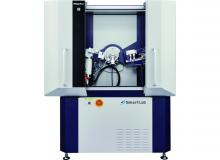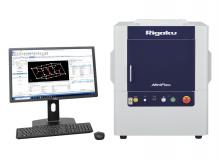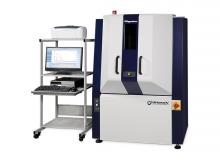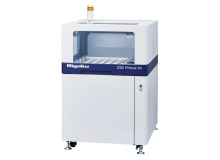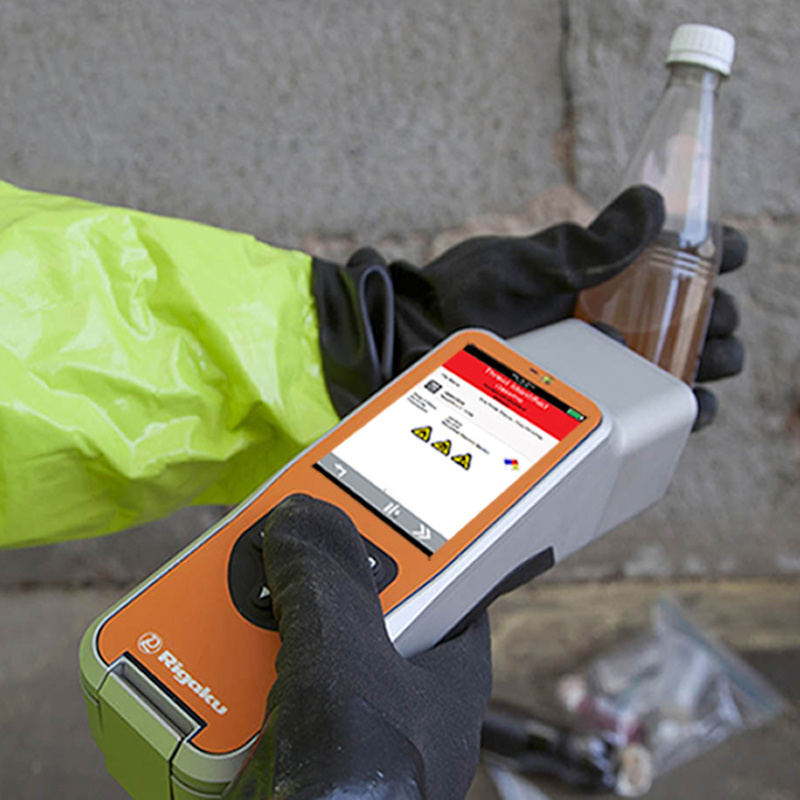
Commonly employed techniques to non-destructively determine the composition of an unknown sample are X-ray fluorescence (XRF) and X-ray diffraction (XRD). X-ray fluorescence provides elemental composition information for boron (B) through uranium (U) from parts-per-million (PPM) to percent (%) levels. Using fundamental parameters (FP) algorithms, XRF can provide quantitative analysis without the need for reference standards. X-ray diffraction provides phase composition identification and can distinguish the major, minor, and trace compounds present in a sample. XRD analysis includes the mineral name of the substance, chemical formula, crystalline system, and reference pattern number from the ICDD International database. Standardless quantitative information can also be obtained from XRD using Rietveld Analysis.
Handheld Raman identifies chemical composition
Progeny ResQ 1064 nm handheld Raman provides emergency responders, law enforcement agencies and the military with the industry’s most comprehensive tool for chemical identification, CBRNe detection, and narcotics classification in a fast and simple handheld form. Faced with increasingly sophisticated chemical threats and global drug trafficking, Progeny ResQ provides users with confidence to: detect explosive threats quickly and accurately in harsh environments, identify a wide range of narcotics and illegal drugs, and respond to suspicious hazardous materials that risk public safety.
Application notes
The following application notes are relevant to this applicationWDXRF
XRD
X-ray CT, Computed tomography
X-ray CT
Rigaku recommends the following systems:
XRD
Advanced state-of-the-art high-resolution XRD system powered by Guidance expert system software
New 6th-generation general purpose benchtop XRD system for phase i.d and phase quantification
High-performance, multi-purpose XRD system for applications ranging from R&D to quality control
WDXRF
High-power, tube-below, sequential WDXRF spectrometer with new ZSX Guidance expert system software


